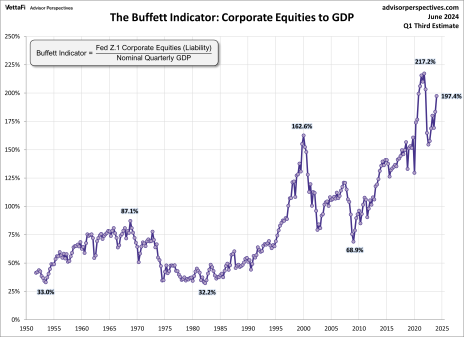Over the first weekend in August, a 10-Q filing from Warren Buffett’s Berkshire Hathaway (BRK.A/B) showed that the legendary investment firm had slashed its stake in Apple (AAPL) by 49%.
That cut followed a first-quarter divestiture of 13% of Berkshire’s Apple stake and brought the total position down to about $84 billion while bringing Berkshire’s cash position up to more than $270 billion.
Of note, even after that cut, Apple represented a third of Berkshire’s invested assets and remained the portfolio’s largest position.
But, if Warren Buffett is slashing his exposure to mega-cap tech stocks, should retail investors follow suit?
Unless you run your portfolio the same way Warren Buffett runs Berkshire Hathaway, the answer is probably, “No.” But if you’re not convinced, here are three factors you should consider.
Why Buffett’s Apple (AAPL) Sale Means Less than You Think
1. Running a Professional Portfolio Is a Different Ballgame
Warren Buffett is not a fan of diversification for professional investors, once saying, “It makes little sense if you know what you are doing.”
Buffett is arguably the best of the best when it comes to investing. Telling him to diversify his portfolio is akin to telling a baseball player destined for Cooperstown that he should start swinging at low curveballs to “diversify” his hitting.
The entire reason that Berkshire massively overweights equity positions at opportune times is that the firm and its army of analysts, all helmed by a living investing legend, are taking swings at opportunities that the rest of the market is missing or undervaluing.
At the same time, Berkshire’s portfolio doesn’t face the same practical constraints ours do. If Buffett whiffs on a bad call, it’s not as if his retirement is now at risk.
Put another way, the incentives and operating conditions of a professional portfolio are much, much different from those of a retail portfolio. The amount of capital Berkshire is working with arguably requires it to take big swings at big opportunities. Buying a 1% stake in “the next hot stock” will barely budge the overall return of Berkshire Hathaway.
Buffett is size-constrained. He needs big opportunities, and he needs to pile a lot of money into them.
2. The Remaining Stake in Apple (AAPL) Is a Huge Vote of Confidence
It’s easy to read the headlines and walk away with the message that Buffett is slashing his exposure to Apple in half. But just as important is the message that it remains the largest position in the Berkshire portfolio.
This is not a fire sale by any means – the selling was done last quarter while Apple was still very much in an upswing, and Buffett had billions of dollars of shares to unwind, meaning it was likely planned well in advance.
A more rational perspective may be that Buffett previously saw such a huge opportunity in Apple that it justified allocating around half of Berkshire’s invested assets to it. Now, that opportunity is smaller or offers less upside, and the appropriate stake for Berkshire is closer to a third of its invested capital.
If we return to our baseball analogy, this isn’t Buffett swatting foul balls to protect the plate, it’s just him choking up on the bat a little bit to make sure he puts the ball in play.
If Buffett is still holding on to a big position, it’s because that investment still presents an opportunity that justifies holding it.
3. Don’t Ignore Valuations
The previous two points aren’t meant to convince you that we should all be piling into highly valued tech stocks full steam ahead. Rather, we should consider the practical constraints of a professional portfolio and the ongoing investment in Apple to frame how we consider the bigger picture.
To that end, I want to highlight the “Buffett Indicator,” which is the total value of the U.S. stock market divided by the country’s GDP. It’s called the Buffett Indicator because Warren Buffett once said that if he had to pay attention to only one indicator it would be this.
The chart above (courtesy of Advisor Perspectives) shows that the value of the U.S. stock market is historically high relative to the economic output of the country. It’s more overvalued than at any point other than the 2021 market highs, and that includes the dotcom bubble.
That chart runs through the end of the second quarter and coincides with the timing of Berkshire’s sale of Apple.
In light of that context, we can surmise that Buffett saw a market that was overvalued and opted to take some profits in a very successful trade (the Financial Times estimated that Berkshire had made 800% on its Apple investment, dating back to 2016) while maintaining a relatively large stake in the position.
The lesson we take away from this shouldn’t be that Buffett is selling Apple and that we should be too, it’s that even the investors with the highest conviction in a position would be wise to take some profits when there are signs that the position is overvalued, even if it still has some room to run.


